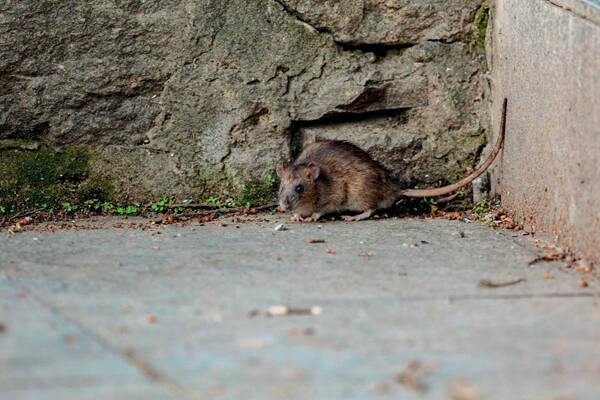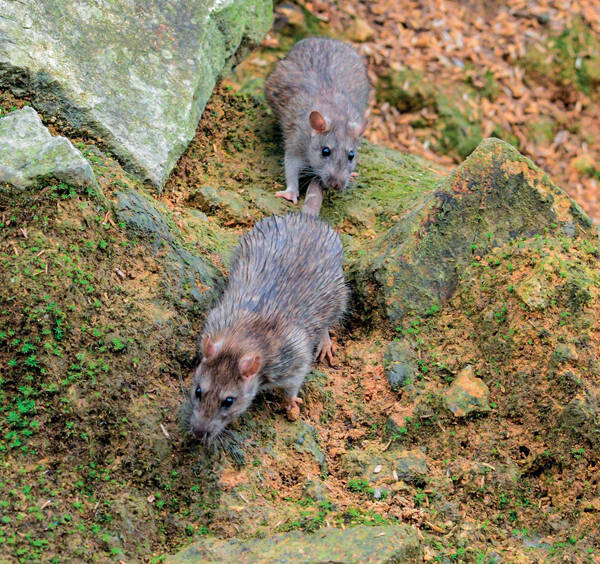Rattus norvegicus
IUCN
LCBasic Information
Scientific classification
- name:Rattus norvegicus
- Scientific Name:Rattus norvegicus,Brown rat, rat, white-tailed rat, dung rat, dung rat
- Outline:Rodents
- Family:Rodentia Muridae Rat
Vital signs
- length:170-250mm
- Weight:106-133g
- lifetime:
Feature
The body is stout, and the older it gets, the darker the brown color of its back hair. Brown rats are one of the most harmful rats in rural areas and towns. They are numerous and cause great harm.
Distribution and Habitat
Originally from Siberia, Russia, Heilongjiang, China, northern North Korea and Japan. Later introduced to all parts of the world. In the wild, it is mainly distributed in cold environments at high latitudes of the earth; in warm areas, it is mainly distributed in houses. It is distributed all over the country.
The habitat of brown rats is very wide, and they can be found in riverside grasslands, shrubs, crop fields, wastelands, and forest edges and ponds, but most of them are in residential areas, mainly living in people's houses and various buildings, especially in livestock sheds, warehouses, canteens, slaughterhouses, etc.
Appearance
The individual is relatively large, with small ears, averaging less than 20mm (18-20mm), which do not reach the rear edge of the eye when folded forward; the color of the abdomen is lead gray; the tail is significantly shorter than the body length, and the upper and lower parts of the tail are all black-brown. The ring pattern formed by the scales on the tail is more obvious, and short and coarse hair grows inside the ring pattern. The hair at the tip of the tail is slightly longer. The hair color of the entire back is uniform, black-brown. There are many guard hairs, which are longer than the down, coarse, and all black. The hair color on the sides of the body is lighter, and the gray tone is more obvious. The hair color of the back and ventral sides gradually transitions, without a clear boundary. Some individuals have a white chin, some individuals have a white spot on the chest, and some individuals have a slightly yellow-white tone at the tip of the hair. The back of the front and
Details
Brown rats belong to the subfamily Murinae. The species-level classification status is stable, but there are many synonyms and subspecies, and the issue of its merger is controversial. The individuals of this species are smaller in the north and larger in the south. They mainly live in houses and are distributed in farmland around houses in summer. Brown rats are one of the most harmful rats in rural areas and towns. They are numerous and cause great harm.

The brown rat is a family-living rodent that can live in the same cave for several generations, but males often fight with each other. The brown rat is a diurnal rat that is mainly active at night. In different seasons, the peak activity of the brown rat in a day is similar, that is, 16:00-20:00 and before dawn. The brown rat is agile, with a keen sense of smell and touch, but poor vision. They have a strong memory and high vigilance. They often walk along the base of walls and corners. They are cautious and very sensitive to environmental changes. They become suspicious when encountering foreign objects and hide immediately when encountering interference. The activities of brown rats are affected by climate and food throughout the year. They usually go out of their holes more frequently in spring and autumn, and less frequently in midsummer and severe winter, but they do not hibernate.
Brown rats have strong mobility and are good at climbing, jumping, swimming and diving. They mainly rely on smell, taste, hearing and touch to carry out activities; they can jump 1m high on the ground, 1.2m long, climb to the top of buildings along brick walls and other rough walls; they can drill through openings larger than 1.25cm square, can quickly pass through horizontal thick ropes, pipes, cables, etc., and can climb up and down on upright wood, pipes and cables; they are good at swimming and diving, and can swim across 0.8km of open water; they are very alert and are often not easily touched by new food or objects. But once they get used to it, they lose their vigilance.
Brown rats have a strong ability to bite, and can bite lead plates, aluminum plates, plastics, rubber, poor quality concrete, asphalt and other building materials, and are very easy to bite and damage wooden doors and windows, furniture, wires, cables, etc. But it is powerless against steel products and solid concrete buildings. The rat has sharp incisors like chisels and well-developed jaw muscles. It is highly adaptable and can reproduce in cold storage at around -20℃, live in tropical areas above 40℃, and even climb on trains, ships, and airplanes for travel. It is reported that the rat was still found alive after live ammunition shooting on the atomic bomb test site, Engebi Island in the Pacific Ocean.
The brown rat is an omnivorous animal. It has a wide and diverse diet. Almost all foods, as well as feed, industrial oils and even some lubricants, even garbage, feces, candles, soaps, etc. can be used as its food. But it is selective about food and likes to eat foods with sufficient fat and water content. Its choice of food varies depending on the habitat. Indoors in residential areas, they like to eat meat, vegetables, fruits, cakes, sugars, etc., and also bite young poultry and young livestock; in the wild, they feed on crop seeds and fruits, such as corn, wheat, rice, bean pods, sweet potatoes, melons, sunflower seeds, etc., and also eat green parts of plants and grass seeds. They often use animal food as their main food, preying on small fish, shrimps, crabs, large insects, frogs, etc., and even preying on poultry such as chickens and ducklings.

Brown rats have a wide range of habitats and are amphibious rats both at home and in the wild. They live mainly indoors, accounting for 80.3%, while outdoors and farmland near villages account for 14.3% and 5.4% respectively. Indoors, they mainly make burrows in messy and hidden places such as corners of houses, bases of walls, kitchens, warehouses, sewers, and garbage dumps. Outdoors, they make caves in firewood stacks, piles of rocks, bases of walls, sewers, ridges, and graves. The distribution of its caves is as follows: 67.7% at the base of the wall, 8% at the sewer, 7.1% at the haystack, 5.4% at the ridge, and 11.7% at the others. Brown rats have a habit of living in groups, and there is a clear hierarchy in the group. Strong male rats with high ranks often drive the weak out of the caves, monopolize several female rats, and occupy multiple caves.
Brown rats have strong reproductive capacity. As long as the environment and climate are suitable and the food is abundant, they can reproduce all year round. Spring and autumn are the peak seasons for reproduction. Generally, reproduction stops in the hot summer and the twelfth month of winter. They give birth to 6 to 10 litters a year, with 4 to 10 pups per litter, and up to 17 pups. The female rat can conceive after giving birth, and the gestation period is 20 to 22 days. Newborn rats grow fast, grow hair within a week, open their eyes in 9-14 days, and can mate and reproduce at 3 months of sexual maturity, and can maintain reproductive potential for 1-2 years. The life span can reach 3 years, with an average of 1.5-2 years.
Brown rats are the main pests in China's vast agricultural areas, towns and industrial and mining enterprises. They steal, waste and pollute a large number of various grains and foods, and destroy furniture, cabinets, clothes, books, precious objects, instruments, equipment and buildings. They bite and kill poultry and young animals, affecting livestock and poultry production. They have even bitten babies to death or paralyzed the elderly. They also chew on cables and enter high-voltage substations, which may cause power outages, subway shutdowns, factory power outages, and fires. In addition, they spread hemorrhagic fever, plague, scrub typhus, leptospirosis, schistosomiasis, toxoplasmosis, typhus, Q fever, tick-borne relapsing fever, and many other diseases.
Listed in the 2008 Red List of Endangered Species of the World Conservation Union (IUCN) ver 3.1 - Least Concern (LC).








